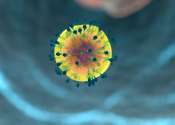Dietary supplements linked with severe health events in children, young adults
Consumption of dietary supplements sold for weight loss, muscle building, and energy was associated with increased risk for severe medical events in children and young adults compared to consumption of vitamins, according ...
Jun 5, 2019
1
297








